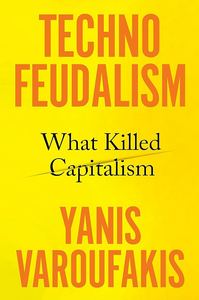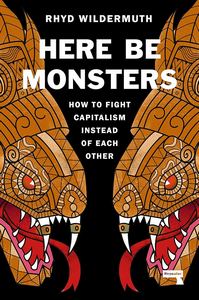Book Reviews – Mikanowski, Varoufakis, Wildermuth
 Goodbye Eastern Europe. An Intimate History of a Divided Land. By Jacob Mikanowski. Oneworld. 2023. 375pp.
Goodbye Eastern Europe. An Intimate History of a Divided Land. By Jacob Mikanowski. Oneworld. 2023. 375pp.
Jacob Mikanowski’s book tells of how over many centuries, in what we still commonly call Eastern Europe, people and territories mixed, split and merged and empires came and went. Goodbye Eastern Europe is remarkable both for the eloquence and flair with which it is written and for the immensely broad and detailed knowledge it displays of the complex history of so many peoples and so many lands, into which the author also poignantly interweaves the story of his own Polish family. In a wide-ranging and dramatic but dispassionate narrative of shifting frontiers, multi-layered identities and changing nationalities, we view both worlds that have vanished and new cultures and systems of governments that have arisen, from medieval times right up to the present day, with even a perspective on the current war in Ukraine.
In comparing Eastern to Western Europe the author points to major developmental differences. In the West, he writes, ‘rulers worked hard to homogenize their states’, ‘the equation between ethnic and linguistic belonging began very early’, and ‘the machinery of the state worked like a giant steamroller, ironing out differences wherever they could be found’. In Eastern Europe, on the other hand, empires were much more pragmatic, tending to accept and indeed ‘accentuate difference rather than suppress it’. So, for example, Christians of all persuasions and Jews were allowed to manage their own affairs by the Ottomans and the Hapsburgs. A Hungarian king, we are told, ‘lectured his son about the usefulness of immigrants’ on the grounds that ‘a kingdom of one language and one custom is weak and fragile’ and newcomers should be treated ‘with goodwill and honor’, in order that ‘they will prefer to live with you rather than inhabit any other place’. So Eastern Europe became a land of diversity and difference and remained largely so until the wars of the last two centuries tore the old empires apart (the Ottoman Empire, for example, ‘was crumbling like a mouthful of rotten teeth’), and made it begin to take on the homogenized, nationalistic model of the Western nation state. At the end of the First World War, in particular, with these new political formations taking shape, the map of Eastern Europe ‘resembled a sky full of shifting clouds’, as national mythologies (that ‘nemesis of the working class’, as someone has put it) developed.
Part 3, the last main section of this book, deals with how these clouds shifted and eventually came to rest, via a series of illuminating chapters entitled, respectively, ‘Moderns’, ‘Prophets’, ‘War’, ‘Stalinism’, ‘Socialism’ and ‘Thaw’, and ranging over the whole stretch of what could be called Eastern Europe from Poland and the Baltic states in the north to Bulgaria and Albania in the south. The chapter on war – World War 2 – though magisterially and dispassionately told, is hard to read for its unflinching account of the near extermination of the Jewish people in the Holocaust. Then, in the chapter on Stalinism in particular, while not dwelling on the horrors of the Soviet pre-war period when millions of Stalin’s supposed ‘enemies’ were starved, deported or eliminated, the author presents a stark view of the expansion of the Soviet dictatorship from 1939 onwards, as it initially took in eastern Poland and the Baltic states and then, after the end of the Second World War, completed the process of domination, in which ‘every country in the region was a one-party state, dominated by a local version of the Communist Party’, with leaders approved by Stalin who ‘dictated their foreign policies and determined their relationships with the rest of the world’. This was, as the author so eloquently puts it, the ‘dreamworld of High Stalinism’, a revolution ‘imposed not from below but from above, and not from within but from without’. It was, furthermore, he tells us, not just a model of political oppression but also failed to provide anything resembling decent living standards to its working masses and any claim to be establishing socialism was ‘shameless puffery’.
A contradictory and misleading thing, unfortunately, is that, having said this, the title he gives to the chapter that comes next, referring to the Khruschev-Brezhnev era that followed Stalinism, is ‘Socialism’. Misleading both because the reality of this era bore no relation to the classless, stateless, moneyless society of free access that proper socialism is and also because the author himself then goes on to portray that reality as very much the same as before but in a milder version. He characterises it thus: ‘Stalinism eliminated its enemies. The socialist regimes that followed neutralized them instead’. Whatever the case, it carried on being, as he puts it, ‘a realm of deceit, of empty slogans and meaningless exhortations’ as well as ‘status and scarcity’, where queues were one of’ ‘the defining experiences of life’.
It could not last and, from 1989 onwards, what the author – again misleadingly – calls ‘real socialism’ began to break up, both in the satellite states and the Soviet Union itself, leading to what he refers to as ‘thaw’. He sees this shift as a process of moving from socialism to capitalism, whereas in reality capitalism already existed in the East. It was not the private or ‘mixed economy’ capitalism of the West but capitalism nonetheless, state capitalism, a system with all the characteristic features of that system – money and wages, buying and selling, an elite class controlling (if not formally owning) the means of production and living off the benefits of this. Something that is still largely the case in countries such as China and Cuba.
The following overview in the book’s epilogue provides a fitting epitaph: ‘For Eastern Europe, the twentieth century was a century of barely interrupted cataclysms. The old ties that bound people together dissolved, only to be replaced with murderous aggression. As rival armies flooded into the region from east and west, neighbor killed neighbor. When the wars ended, mass expulsions and population transfers unravelled what was left of the old Eastern European tapestry’.
HKM
 Technofeudalism: What Killed Capitalism. By Yanis Varoufakis. Bodley Head. 304 pages.
Technofeudalism: What Killed Capitalism. By Yanis Varoufakis. Bodley Head. 304 pages.
Following up on his Explaining capitalism to my daughter, this latest book from Yanis Varoufakis takes the form of a poignant imagined conversation with his recently deceased father. It seeks to answer his Dad’s question about the internet: ‘Now computers speak to each other, will this make capitalism impossible to overthrow? Or might it finally reveal its Achilles heel?’ His answer is that they have overthrown capitalism, in favour of what he terms ‘Technofeudalism’.
He’s not the first to claim the end of capitalism in a form of new class society. In this case, his analysis is based on several strands. ‘Cloudalists’ (as he terms the owners of social media platforms and web services, like Amazon or Meta) have inserted themselves as an essential part of the market, both in acting as middlemen to merchants, as well as producing demand, and so are able to demand rent from productive capitalists.
To do this, they use the free labour of ‘technoserfs’, ie, all of us who feed the data streams of these cloudalists in our free time through interacting with these platforms and teaching them all about ourselves. The cloudalists, he claims, do not make profits, they rely on asset appreciation, fed by the money creation by governments that cannot afford to let the quantitative easing process ever end.
There are several flaws in this thinking. Firstly, rent is not an inherently feudal notion, although it is the form by which aristocrats managed to convert their assets to cope with the advent of capitalism. At feudalism’s height, an aristocrat did not get his income from owning estates, but because of his rank, and the subordination of people below him: he was free to demand their surplus product (which was anything beyond that which they needed to live on).
As commodity production became more generalised it became easier to accept money payments. The aristocrat’s estates were transformed into a type of property. When commodity production led to capitalist production, it became possible to turn the rental claim into a demand for a share of surplus value produced. This is the type of rent ‘cloudalists’ extract, it still depends on the exploitation of waged labour.
Their position as middlemen is exactly the same as when Woolworths held a prime spot on the high street, and was able to make profits by being the first port of call for many shoppers who, seeing the goods displayed, might find new things they wanted to buy. All the ‘cloudalists’ have done is concentrate this capacity into fewer hands to ensure that the surplus value comes their way.
Similarly, that we are ‘cloud serfs’ is inaccurate, we are not giving a surplus of our product to the owners of Amazon, it is an externality, a primary accumulation, something that has always been a part of capitalism. The search for things that can be gathered for free and turned into commodified wealth has always been a part of the way capitalism amasses wealth (most notably and horrifically in the form of mass enslavement of Africans in the 17th and 18th centuries).
Even the notion that these tech companies don’t need to make a profit anymore is suspect, as we’ve shown in these pages before, the likes of Jeff Bezos and Bill Gates arguably structure their wealth to avoid showing any income (and thus avoid taxation), likewise massive companies are adroit at showing little or no taxable profits: that doesn’t mean that surplus value has not been extracted, it simply means the accounting categories can be manipulated to disguise it.
As he shows, this has led to massive concentration of capital ownership: three companies, Vanguard, BlackRock and State Street ‘effectively own American capitalism’. These are investment funds: ‘Together, the Big Three are the largest single shareholder in almost 90 per cent of firms listed in the New York Stock Exchange, including Apple, Microsoft, ExxonMobil, General Electric and Coca-Cola’. They are a vehicle for passive investing, and although they do concentrate the wealth, the competition between firms comes to be attractive to such investment.
Of course, there are political implications to this: concentration of wealth is concentration of political power, and the need for the owners of stock to keep the nominal asset value up does drive the political decisions of governments; but what Varoufakis analyses is just the ongoing rivalry between owners of different types of capital to get their hands on a share of the surplus value. What ‘cloudalists’ do is concentrate and generalise the cloud of surplus value. The tendency of capitalist production is to divorce prices from values, ensuring returns go to those who own the most capital. What Varoufakis is analysing is not the downfall of capitalism, but its purest application.
P.S.
 Here Be Monsters: How to Fight Capitalism Instead of Each Other. By Rhys Wildermuth. Repeater. £12.99.
Here Be Monsters: How to Fight Capitalism Instead of Each Other. By Rhys Wildermuth. Repeater. £12.99.
The idea behind the title is that monsters were once seen as signs that something was wrong in the world, but also as messengers pointing to a solution. However, this aspect of the book is not very convincing, so we will not deal with it here.
The book is basically a critique of ‘social justice identity politics’, a set of ideas that employs the concept of intersectionality. So a black woman is oppressed in two ways, by being a woman and by being black. The real oppressor is then, apparently, the white, heterosexual, able-bodied, cis-gender man, who subjugates anyone who is black, gay, disabled, transgender or a woman. Wildermuth argues that class has no position in such a system, and that introducing class would in fact undermine the entire framework. A man who matches all the above criteria but is homeless and jobless has little in common with a capitalist who has the same traits. And a black woman millionaire has equally little in common with a black woman struggling to pay the rent and feed her children. Intersectional social justice, he says, is perfectly compatible with the continuation of capitalism, and having more black women CEOs would not alter capitalism at all.
The concept of class employed here is however not entirely clear. There are references to the professional-managerial class, who supposedly ‘share and reproduce the cultural values of the capitalists’ and are ‘guardians of the social order’. They are part of the working class, though are paid more than most, and at one point are roughly identified with white-collar workers. The author is correct to say that both rural and urban workers belong to the same class and are exploited, but more needs to be said on how class is defined.
Wildermuth states that it is unfortunately all too easy for some on the left to dismiss any contrary view to theirs in very strong terms, such as the feminist academic Judith Butler, who considers as fascist the anti-gender movement in parts of eastern Europe (Guardian 23/10/21).
The account is enlivened by the author recounting some of his personal experiences, such as the time a black man in a cafe shouted at him, ‘The only good white person is the one who knows he should be shot and killed because he is incapable of not harming others.’ The book contains a lot of interesting points on how identity politics fails to address the real issues of poverty and exploitation, but (despite the sub-title) says disappointingly little about the real way to fight capitalism. There is a reference to how Lenin’s vanguardism was quite different from the views of Marx and Engels, but nothing about the abolition of the wages system. Wildermuth says at one point that the left had given up on trying to change material circumstances and instead ‘settled for symbolic struggles with no clear end goal’. Sadly, there is little here on end goals, either.
PB
